10 Tips for Ticketing SLA Management in 2025
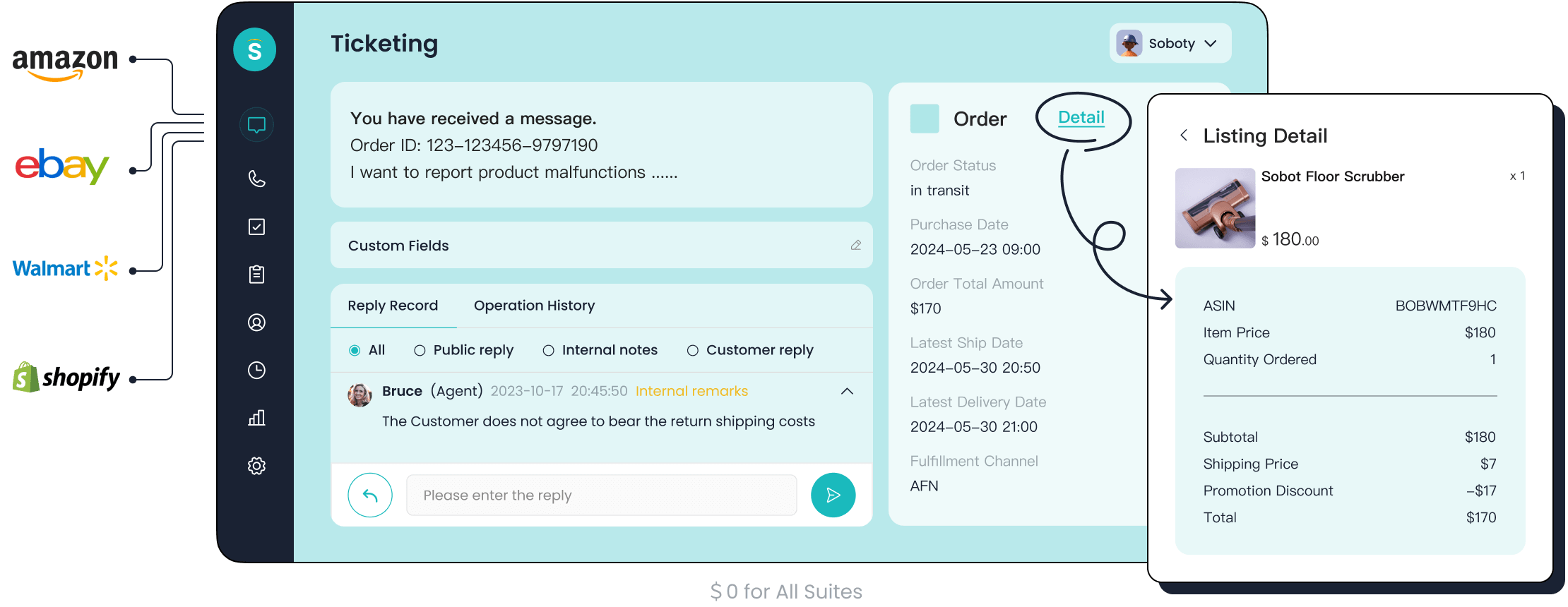
SLA compliance plays a vital role in delivering exceptional customer service. It ensures timely responses and resolutions, which directly impact customer satisfaction. As we approach 2025, businesses face new challenges in Ticketing SLA Management. Emerging trends like AI integration, flexible policies, and heightened security standards demand your attention. For instance, automation now enables real-time SLA tracking, while sustainability metrics are becoming essential for cloud services. Tools like Sobot's Ticketing System simplify this complexity by automating workflows and offering intelligent SLA management. Adapting to these changes will help you stay ahead and meet evolving customer expectations.
Leverage Technology for Ticketing SLA Management
Automate SLA Tracking and Monitoring
Use AI-powered tools to track SLA compliance in real-time.
Automation has revolutionized ticketing SLA management, making it easier to track compliance without manual intervention. AI-powered tools can monitor SLA performance in real-time, ensuring you stay ahead of potential issues. For example, dashboards provide instant visibility into SLA metrics, helping you identify bottlenecks before they escalate. These tools also streamline processes by automating repetitive tasks, like sending updates to customers about their ticket status.
By using automation, you can set up triggers that notify your team when a ticket approaches its SLA deadline. This proactive approach ensures accountability and prevents breaches. Tools like Sobot's Ticketing System take it a step further by offering intelligent SLA reminders and automated escalation for overdue tickets. This not only improves resolution times but also enhances customer satisfaction by keeping service levels consistent.
Implement automated alerts for SLA breaches.
Automated alerts act as your safety net in ticketing SLA management. They notify agents immediately when a ticket risks breaching its SLA, allowing them to act quickly. For instance, if a high-priority ticket remains unresolved, the system can escalate it to a senior agent or manager. This ensures critical issues don’t fall through the cracks.

Sobot's Ticketing System excels in this area by providing smart notifications and time-triggered actions. These features help you maintain service quality and meet customer expectations. With automation, you can focus on delivering exceptional service rather than worrying about missed deadlines.
Integrate Unified Platforms
Centralize communication channels with tools like Sobot's Ticketing System.
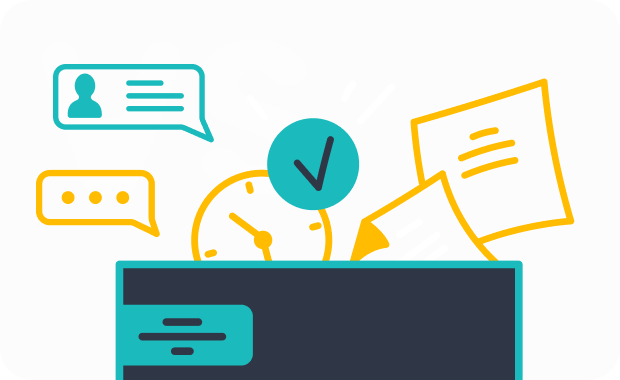
Managing multiple communication channels can feel overwhelming. A unified platform simplifies this by consolidating emails, chats, and voicemails into one system. This centralization improves efficiency and ensures no ticket gets overlooked. Sobot's Ticketing System offers this capability, allowing you to manage all customer interactions seamlessly.
By integrating communication channels, you reduce the risk of human error and improve SLA compliance. It also enhances visibility, making it easier for your team to track ticket progress and meet deadlines. This streamlined approach is essential for effective ticketing SLA management in 2025.
Ensure seamless data flow for better SLA management.
A unified platform doesn’t just centralize communication; it also ensures smooth data flow. This is crucial for tracking SLA performance and making informed decisions. For example, Sobot's Ticketing System integrates with e-commerce platforms like Shopify, enabling you to access customer data effortlessly.
Seamless data flow eliminates inefficiencies and helps you adapt SLA terms in real-time. It also supports dynamic SLAs, allowing you to tailor service levels to meet customer needs. This flexibility not only boosts customer satisfaction but also gives you a competitive edge in the market.
Customize and Improve SLA Policies
Define Clear SLA Metrics
Set realistic response and resolution times based on ticket priority.
Not all tickets are created equal. High-priority issues demand faster responses, while low-priority ones can afford longer timelines. Setting realistic response and resolution times ensures your team can meet expectations without compromising quality. For example, a critical system outage might require a 1-hour response time, while a general inquiry could have a 24-hour window.
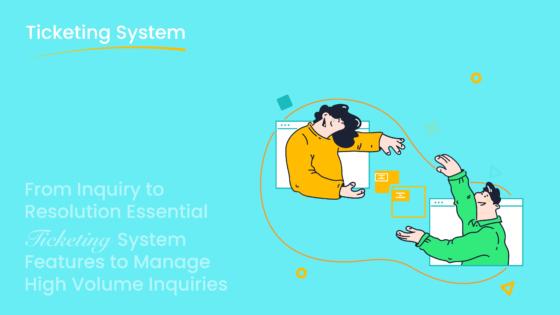
Using tools like Sobot's Ticketing System, you can automate ticket prioritization based on urgency and customer type. This ensures that your team focuses on what matters most, improving SLA compliance and reducing the time to resolution. Historical data also plays a key role here. By analyzing past performance, you can set achievable targets that align with your team's capacity and customer needs.
Break down complex SLAs into manageable components.
Complex service level agreements can overwhelm your team and lead to missed deadlines. Breaking them into smaller, actionable parts makes them easier to manage. For instance, you can separate SLAs into categories like response time, resolution time, and escalation procedures.
A well-structured SLA might include:
- Service Description: Clearly outline the scope of services.
- Performance Metrics: Include measurable goals like first contact resolution rate and customer satisfaction score.
- Escalation Procedures: Define steps for unresolved issues.
This approach not only simplifies compliance but also helps you track progress more effectively. Sobot's analytics dashboard can assist by providing real-time insights into each SLA component, helping you improve SLA adherence.
Tailor SLAs to Customer Needs
Offer differentiated SLAs for VIP customers.
Your VIP customers deserve special treatment. Offering differentiated SLAs for them can boost loyalty and satisfaction. For example, you might promise faster response times or 24/7 support for premium clients. This ensures they feel valued and prioritized.
Sobot's Ticketing System makes this easy by allowing you to customize SLA terms based on customer type. You can set unique response and resolution times for VIPs, ensuring their needs are met without disrupting overall operations. This tailored approach not only improves SLA compliance but also strengthens customer relationships.
Align SLA policies with customer expectations and business goals.
Your SLA policies should reflect both customer needs and your business objectives. For instance, if customer retention is a priority, focus on rapid response and resolution times. Aligning SLAs with business goals ensures efficient resource use and operational success.
A good SLA policy builds trust and sets clear expectations. It also helps resolve conflicts and measures team effectiveness. Tools like Sobot's Ticketing System support this alignment by offering features like automated escalations and performance tracking. By keeping your SLAs flexible and customer-focused, you can improve SLA compliance while achieving your business targets.
Enhance Team Collaboration for SLA Success
Provide SLA Training and Resources
Educate agents on SLA compliance and its importance.
Your team can’t meet SLA goals if they don’t understand them. Educating agents about SLA compliance ensures they know why it matters and how it impacts customer satisfaction. Regular training sessions on SLA procedures and best practices can make a big difference. For example, teaching agents how to prioritize tickets based on urgency helps reduce SLA breaches.
Training also boosts productivity. When agents know how to handle issues efficiently, they’re less likely to miss deadlines. Encourage feedback during these sessions. It’s a great way to identify gaps in your SLA management process and improve it over time.
Train teams on using tools like Sobot's Ticketing System effectively.
Technology is only as good as the people using it. Training your team on tools like Sobot's Ticketing System ensures they can leverage its features to prevent breaches. For instance, agents can use automated SLA reminders to stay on top of deadlines. They can also rely on smart notifications to act quickly when a ticket risks breaching its SLA.
Sobot’s user-friendly interface makes this training straightforward. With features like unified ticket handling and AI-powered analytics, your team can focus on delivering exceptional service while staying compliant with SLAs.
Foster Cross-Functional Communication
Use shared dashboards to improve visibility across teams.
Shared dashboards are game-changers for SLA management. They give everyone—from agents to managers—a clear view of ticket statuses and SLA metrics. This transparency helps teams collaborate better and address potential breaches before they happen.
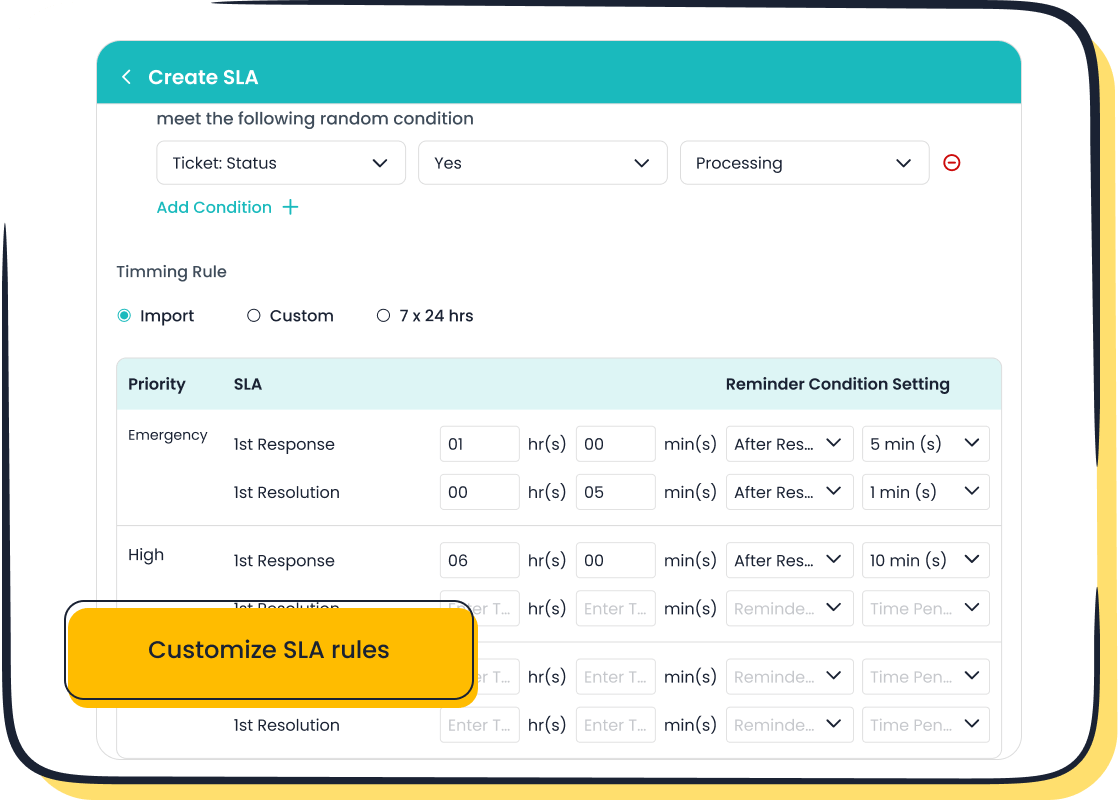
Sobot's Ticketing System offers customizable dashboards that display real-time data. For example, you can track which tickets are nearing their SLA deadlines and assign resources accordingly. This proactive approach minimizes SLA breaches and keeps your operations running smoothly.
Conduct regular reviews to address SLA challenges collaboratively.
Regular reviews are essential for tackling SLA challenges. Gather your team to discuss what’s working and what’s not. Use these sessions to analyze trends, identify recurring issues, and brainstorm solutions.
For instance, if you notice a pattern of SLA breaches during peak periods, you can adjust staffing levels or refine escalation procedures. Collaborative reviews not only improve SLA compliance but also foster a culture of continuous improvement. Tools like Sobot’s analytics can provide valuable insights to guide these discussions.
Monitor SLA Performance with Help Desk Reporting
Use Real-Time Dashboards
Track SLA metrics to identify bottlenecks and improve response times.
Real-time dashboards are essential for effective SLA monitoring. They provide instant access to critical metrics, helping you identify bottlenecks and improve response times. For example, if a high-priority ticket lingers unresolved, the dashboard can highlight it immediately, allowing your team to act quickly. Features like threshold alerts notify you when performance metrics approach critical levels, preventing SLA breaches before they occur.
Sobot's Ticketing System offers high-availability dashboards that ensure uninterrupted access to real-time data. This reliability minimizes downtime and keeps your operations running smoothly. By using these dashboards, you can proactively manage incidents and maintain SLA compliance. Whether it's tracking response times or monitoring resolution rates, real-time dashboards give you the tools to stay ahead.
Leverage Sobot's analytics for actionable insights.
Analytics transform raw data into actionable insights. Sobot's Ticketing System provides advanced analytics that help you understand SLA performance trends. For instance, you can analyze which types of incidents take the longest to resolve and adjust your processes accordingly.
These insights also help you allocate resources more effectively. If certain teams consistently face SLA challenges, you can provide additional training or support. By leveraging analytics, you not only improve SLA compliance but also enhance overall customer satisfaction. With Sobot's tools, you can turn data into a competitive advantage.
Generate Comprehensive SLA Reports
Analyze trends to refine SLA policies.
Comprehensive SLA reports are invaluable for refining your policies. They highlight service achievements and pinpoint areas needing improvement. For example, if reports show frequent SLA breaches during peak hours, you can adjust staffing levels or redefine escalation procedures.
Regular analysis of SLA trends also helps you align your services with customer expectations. Tracking customer satisfaction scores alongside SLA metrics provides a complete view of your performance. This proactive approach ensures your SLA policies remain effective and customer-focused.
Share performance data with stakeholders to drive improvements.
Sharing SLA performance data with stakeholders fosters accountability and continuous improvement. When stakeholders see clear benchmarks and results, they can better understand the impact of SLA compliance on customer satisfaction.
Sobot's Ticketing System simplifies this process with customizable reports. These reports can be shared with managers, agents, or even customers to build trust and transparency. For example, a report showing reduced incidents and faster resolution times demonstrates your commitment to service excellence. By involving stakeholders, you create a collaborative environment for ongoing improvement.
Focus on Customer-Centric SLA Management
Collect and Act on Customer Feedback
Use surveys to gauge satisfaction with SLA performance.
Customer feedback is the backbone of improving your SLA policies. Surveys are one of the most effective ways to gather insights about your SLA performance. After resolving a ticket, send a quick survey to ask customers about their experience. You can also add feedback forms to your website or app for ongoing input. Social media platforms are another great way to engage customers and collect real-time feedback.

For example, if customers frequently mention delays in ticket resolution, you can adjust your SLA response times to better meet their expectations. Tools like Sobot's Ticketing System make this process seamless by integrating feedback collection into your workflow. This ensures you stay aligned with customer needs while maintaining high standards in customer service.
Incorporate feedback into SLA updates for continuous improvement.
Feedback isn’t just for show—it’s a powerful tool for refining your SLA policies. Regularly review customer input to identify pain points and areas for improvement. For instance, if customers express frustration over unclear escalation procedures, you can revise your SLA to include more transparent guidelines.
Incorporating feedback into SLA updates shows your commitment to excellent customer service. It also builds trust and loyalty. According to Bain & Company, customers who rate their experience highly spend 140% more than those who don’t. Sobot's analytics tools can help you analyze feedback trends and implement meaningful changes, ensuring your SLA policies evolve with customer expectations.
Streamline Ticket Resolution Processes
Minimize handoffs to reduce resolution times.
Handoffs slow down ticket resolution and frustrate customers. To minimize them, automate ticket assignments based on agent expertise and workload. This ensures tickets go directly to the right person. Swarming, where team members collaborate in real-time, also reduces the need for handoffs.
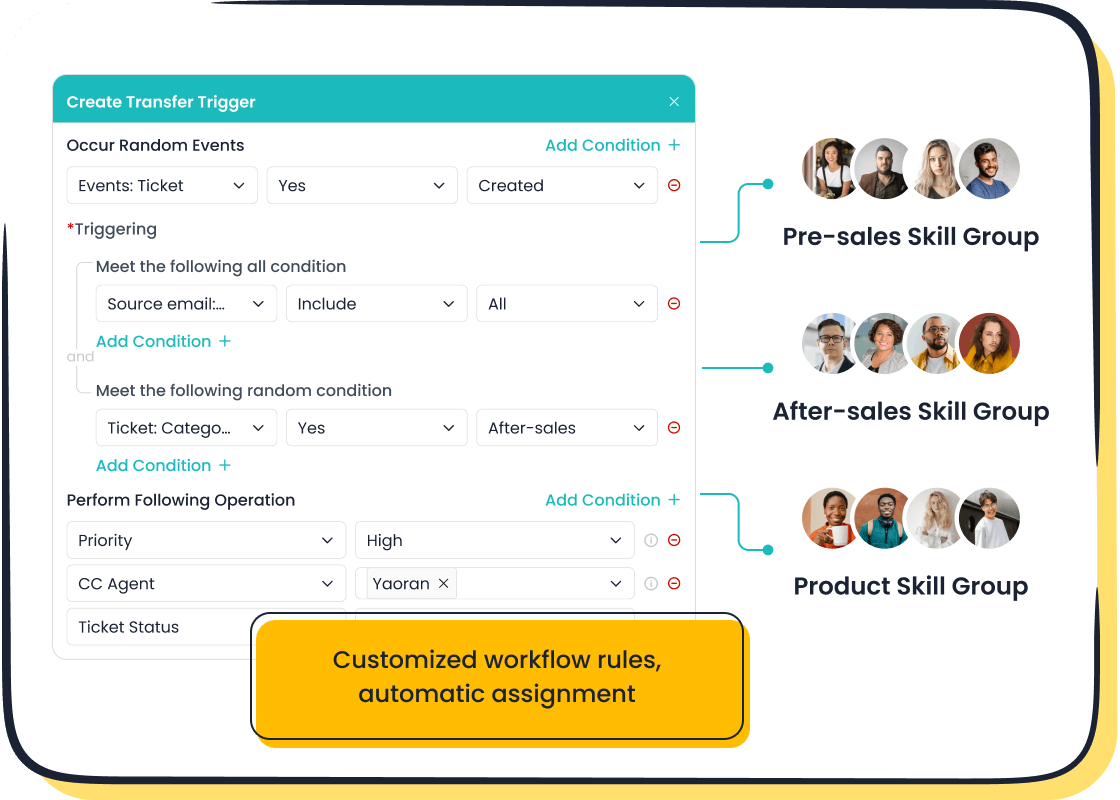
For example, Sobot's Ticketing System uses AI to route tickets efficiently and provides shared dashboards for better collaboration. These features help retain context and resolve issues faster, improving SLA compliance and customer satisfaction.
Empower agents with tools like Sobot's Ticketing System to resolve issues efficiently.
Empowered agents deliver better results. Equip your team with tools that simplify their tasks. Sobot's Ticketing System automates routine processes like ticket assignment and SLA tracking. It also offers AI-powered templates for faster responses.
By reducing manual effort, agents can focus on complex issues that require human attention. This not only speeds up resolution times but also enhances the overall customer service experience. Monitoring SLA metrics through real-time dashboards further helps agents prioritize tasks effectively, ensuring compliance and satisfaction.
Managing ticketing SLAs in 2025 doesn’t have to be overwhelming. By leveraging technology, customizing SLA policies, fostering team collaboration, and focusing on customer-centric strategies, you can achieve exceptional results. Tools like Sobot's Ticketing System simplify this process by automating workflows, improving ticket closure rates, and offering real-time performance reporting.
Combining these approaches enhances SLA management in several ways:
- Automating tasks boosts efficiency, letting your team focus on complex issues.
- Predictive tools help you prevent SLA breaches before they happen.
- AI-driven insights optimize key reporting metrics, ensuring better decision-making.
- Streamlined processes lead to faster resolutions and happier customers.
When you prioritize customer satisfaction and align your strategies with business goals, you gain a competitive edge. Explore solutions like Sobot's Ticketing System to transform your SLA management and deliver outstanding service in 2025.
FAQ
What is SLA reporting, and why is it important?
SLA reporting tracks your team's performance against service level agreements. It helps you identify trends, measure compliance, and improve customer satisfaction. For example, Sobot's Ticketing System provides real-time dashboards and analytics, making SLA reporting seamless and actionable.
How can I improve SLA compliance with reporting tools?
Use tools like Sobot's Ticketing System to automate SLA tracking and generate detailed reports. These tools highlight bottlenecks and help you adjust processes. For instance, reporting dashboards can show which tickets frequently breach SLAs, enabling you to allocate resources more effectively.
What metrics should I include in SLA reporting?
Focus on metrics like response time, resolution time, and customer satisfaction scores. These provide a clear picture of your team's performance. Sobot's analytics feature simplifies SLA reporting by offering customizable metrics tailored to your business needs.
How often should I review SLA reporting data?
Review SLA reporting data weekly or monthly to stay proactive. Regular reviews help you spot trends and make timely adjustments. Sobot's automated reporting ensures you always have up-to-date insights, saving you time and effort.
Can SLA reporting improve customer satisfaction?
Absolutely! SLA reporting identifies areas where your team excels and where improvements are needed. By addressing these gaps, you enhance service quality. Sobot's Ticketing System integrates reporting with customer feedback, ensuring your SLA policies align with customer expectations.
See Also
Essential QMS Principles for Effective Call Center Management
Top Practices for Quality Management in Call Centers
Effective Strategies for Managing Live Chat Agents
Ten Steps for Successful Omnichannel Contact Center Setup
Comprehensive Guide to Quality Assurance Tools for Call Centers